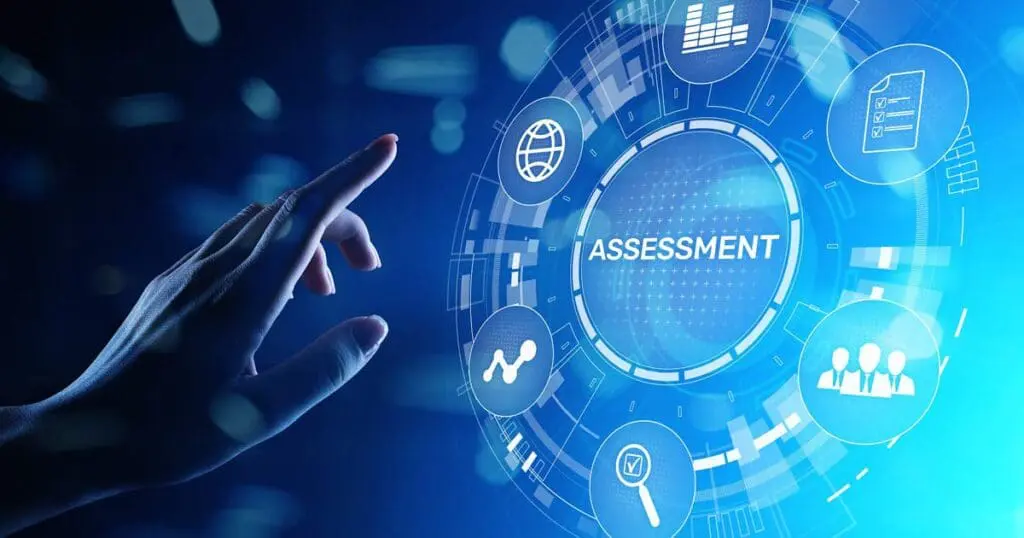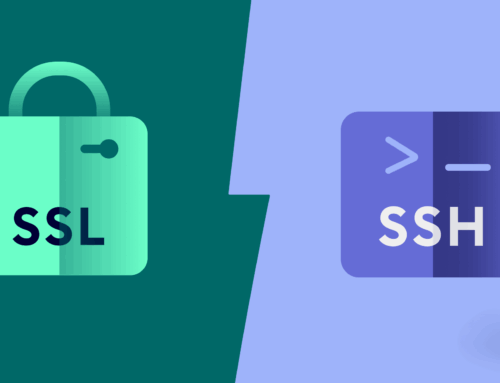
Cybersecurity Risk Assessment: Templates and Frameworks You Can Use.
Cybersecurity Risk Assessment Template and Framework : Identify Use of Cyber Risks
In today’s rapidly evolving digital landscape, the security of your enterprise’s information assets is of paramount importance. **Cyber threats are becoming increasingly sophisticated, necessitating a robust approach to cybersecurity risk management.At Teamwin Global Technologica, we recognize the critical role that cyber security plays in safeguarding your organization’s integrity and ensuring your infrastructure’s security. By employing a comprehensive cybersecurity risk assessment template, businesses can proactively identify potential cyber risks, fortify their defenses, and maintain a strong security posture against emerging threats.
Understanding Cybersecurity Risks
Definition of Cybersecurity Risks
Cybersecurity risks refer to the potential threats and vulnerabilities that can compromise the confidentiality, integrity, and availability of information within an organization. **These risks can manifest as data breaches, unauthorized access, or other cyber threats that jeopardize the security of digital assets.A thorough cyber security risk assessment process is essential in identifying these threats and implementing risk management strategies to mitigate them. By understanding the nature of cybersecurity risks, organizations can better prepare and deploy effective security measures that align with their overall security policies and frameworks.
Types of Cybersecurity Risks
Cybersecurity risks encompass a wide range of threats that can impact an organization. These include malware attacks, phishing scams, insider threats, and vulnerabilities in network infrastructure. **Each type of cyber risk poses unique challenges and requires tailored risk treatment and management approaches.** Utilizing a cybersecurity risk assessment tool, businesses can systematically analyze these threats and prioritize critical security controls to protect against them. By understanding the diverse landscape of cyber threats, organizations can develop a risk-based approach to strengthen their overall security posture.
The Importance of Identifying Risks
Identifying cybersecurity risks is a crucial step in preserving the integrity and functionality of an organization’s IT infrastructure. **An effective risk assessment framework enables businesses to anticipate and mitigate potential cyber threats before they can cause significant harm.** This proactive approach not only fortifies the organization against cyber attacks but also ensures compliance with established cybersecurity frameworks such as the NIST cybersecurity framework. By leveraging assessment templates and tools, organizations can conduct a detailed risk analysis, empowering them to implement robust security risk management strategies that safeguard their enterprise and ensure tomorrow’s success.
Components of a Cybersecurity Risk Assessment
Risk Assessment Framework
At Teamwin Global Technologica, we understand the vital importance of structuring your cybersecurity risk assessment within a well-defined framework. **A risk assessment framework serves as a blueprint, guiding organizations through the intricate process of identifying, analyzing, and addressing cybersecurity risks.** By leveraging industry standards such as the NIST cybersecurity framework, businesses can ensure a comprehensive approach to risk management. This framework not only delineates the steps required to evaluate risks but also integrates critical security controls and policies to maintain a robust security posture. Our expert approach ensures your enterprise remains safeguarded against evolving cyber security threats, providing peace of mind and reliability.
Key Elements of the Assessment Process
The assessment process in a cyber security risk management strategy is pivotal to understanding and mitigating potential threats. Key elements include identifying assets, evaluating vulnerabilities, and determining the likelihood and impact of various cyber risks. **Utilizing a cybersecurity risk assessment tool enhances this process by systematically focusing on the most critical vulnerabilities.** This approach ensures that businesses can prioritize risk treatment strategies effectively. Furthermore, our assessment templates offer a structured method to document findings, ensuring transparency and accountability within your organization’s security operations. By incorporating these elements, Teamwin Global Technologica empowers you with actionable insights to fortify your security measures.
Identifying and Classifying Cyber Risks
Identifying and classifying cyber risks is a cornerstone of effective cybersecurity risk management. **This involves recognizing potential cyber threats that could jeopardize information security, such as malware, phishing attacks, or unauthorized access attempts.** Classification of these risks helps in understanding their severity and potential impact on your business operations. By employing a comprehensive risk assessment method, organizations can systematically categorize risks into levels of criticality, allowing for prioritized response strategies. Teamwin Global Technologica is committed to assisting you in discerning these threats, deploying robust security controls, and maintaining a proactive stance against any security vulnerabilities that could compromise your enterprise’s integrity.
Using a Cybersecurity Risk Assessment Template
Benefits of a Risk Assessment Template
Utilizing a cybersecurity risk assessment template offers numerous advantages that bolster an organization’s security posture. **First and foremost, it provides a structured and comprehensive framework for identifying and analyzing potential cyber risks, ensuring that no threat goes unnoticed.** This systematic approach enhances the efficiency and effectiveness of the risk management process by streamlining the assessment process and fostering consistency in evaluating cybersecurity risks across different departments. Moreover, a well-crafted template facilitates communication and understanding of security measures among stakeholders, helping them to collectively fortify defenses against cyber threats. At Teamwin Global Technologica, we emphasize the importance of these templates in empowering organizations to proactively address vulnerabilities and maintain robust information security.
How to Create a Risk Assessment Template
Creating a cybersecurity risk assessment template involves a meticulous process tailored to your organization’s unique needs and security policies. **Start by defining the scope of the assessment, identifying critical assets that require protection, and understanding the potential cyber threats they face.** Incorporate elements from established frameworks such as the NIST cybersecurity framework to ensure thoroughness and alignment with industry standards. The template should facilitate a detailed risk analysis, classify risks by their severity, and outline risk management strategies that prioritize critical security controls. By leveraging our expertise at Teamwin Global Technologica, we assist you in crafting a template that not only identifies security vulnerabilities but also enhances your enterprise’s resilience against evolving threats.
Examples of Cybersecurity Risk Assessment Templates
Examples of effective cybersecurity risk assessment templates can vary based on industry requirements and organizational goals, yet they all share common principles that underpin successful risk management. **Some templates focus on specific sectors, integrating guidelines from the Center for Internet Security to address unique industry challenges.** Others adopt a broader approach, encompassing comprehensive vulnerability management and risk treatment strategies that are adaptable to various organizational contexts. At Teamwin Global Technologica, we provide assessment tools that exemplify best practices in cybersecurity risk management, ensuring that your business can anticipate and mitigate risks efficiently. These examples serve as invaluable resources, guiding you in developing a tailored security risk assessment method that fortifies your organization’s information security.
Risk Assessment Methods and Tools
Common Risk Assessment Methods
Effective cybersecurity risk management begins with understanding and applying common risk assessment methods. **These methods include qualitative, quantitative, and hybrid approaches, each offering unique insights into potential cyber risks.** Qualitative assessments focus on subjective analysis, leveraging expert judgment to assess the likelihood and impact of security threats. Quantitative methods, on the other hand, employ statistical models to deliver measurable data on potential losses. A hybrid approach combines both security assessments and risk levels to provide a balanced perspective. At Teamwin Global Technologica, we emphasize employing these methods to ensure a robust assessment process that aligns with your organization’s security policies and objectives.
Assessment Tools for Cyber Risk Management
Leveraging advanced assessment tools is crucial for effective cyber risk management. **These tools facilitate the identification and evaluation of cybersecurity threats, streamlining the risk assessment process.** By employing a cybersecurity risk assessment tool, organizations can systematically analyze vulnerabilities and prioritize security risk treatment strategies. At Teamwin Global Technologica, we offer cutting-edge assessment tools designed to enhance your cybersecurity framework. These tools integrate seamlessly with existing security controls, providing real-time data to anticipate and mitigate cyber threats. Our solutions empower businesses to maintain a proactive security posture, safeguarding information security and ensuring operational resilience.
Integrating NIST Framework into Risk Assessments
Integrating the NIST cybersecurity framework into your cyber risk assessment is a strategic move to enhance your organization’s information security risk management. **The NIST framework provides a comprehensive set of guidelines that help structure the risk assessment process.** By adopting this framework, organizations can develop a consistent methodology for identifying, analyzing, and mitigating cybersecurity risks. At Teamwin Global Technologica, we assist in embedding NIST principles into your assessment templates, ensuring alignment with industry standards. This integration not only fortifies your security measures but also enhances your ability to respond to cyber security threats swiftly and effectively, preserving your enterprise’s integrity and reputation.
Implementing Cybersecurity Risk Management
Developing a Cybersecurity Risk Management Strategy
Developing a robust cybersecurity risk management strategy is essential for safeguarding your organization against evolving cyber threats. This strategy should encompass the identification of critical assets, assessment of potential vulnerabilities, and deployment of effective security controls in your security assessment.** At Teamwin Global Technologica, we recognize that a well-defined risk management framework is vital to fortifying your enterprise’s defenses. By employing a risk-based approach, organizations can prioritize resources and tailor risk management strategies to their unique security risk landscape. Our expert guidance ensures that your strategy not only aligns with your business objectives but also enhances your overall security posture.
Best Practices for Ongoing Risk Assessment
Ongoing risk assessment is crucial in maintaining a resilient cybersecurity posture. **Best practices include regular updates to the risk assessment template, continuous monitoring for new vulnerabilities, and adapting to emerging threats.** At Teamwin Global Technologica, we advocate for a proactive approach to security risk management. By employing automated assessment tools and leveraging the latest industry standards, security teams can ensure their defenses remain robust. Regular training and awareness programs are also integral, equipping staff with the knowledge to identify and respond to cyber security threats effectively. Our commitment is to empower your organization to anticipate and mitigate risks, securing your future success.
Evaluating and Updating the Risk Assessment Template
Evaluating and updating your risk assessment template is a critical component of effective cybersecurity risk management. **Regular reviews ensure that the template remains relevant and aligns with evolving security policies and frameworks.** At Teamwin Global Technologica, we recommend a systematic evaluation process that incorporates feedback from previous assessments. This iterative approach allows for the refinement of risk based analysis methods and the enhancement of security controls. By staying responsive to changes in the cyber security risk landscape, organizations can maintain a vigilant defense. Our commitment is to provide you with the tools and expertise needed to continuously improve your security risk management practices.
5 Surprising Facts
- Many organizations overlook the importance of regularly updating their cybersecurity risk assessment templates, leading to outdated threat analyses.
- Frameworks like NIST and ISO are widely adopted, yet many businesses customize these templates without fully understanding their foundational principles.
- Cybersecurity risk assessments can reveal vulnerabilities not only in technology but also in human behavior, highlighting the role of employee training.
- Some cybersecurity templates include metrics for measuring the effectiveness of the risk assessment process itself, a feature often ignored by users.
- Risk assessment frameworks can be tailored for specific industries, yet many companies use generic templates that may not address their unique risks.
What is a cybersecurity risk assessment template?
A cybersecurity risk assessment template is a structured document that helps organizations evaluate their cybersecurity posture. It provides a framework to identify, analyze, and mitigate cybersecurity risks. Using a template can streamline the risk assessment process, ensuring that all critical areas, such as data security and information security management, are addressed systematically.
How can I conduct a cybersecurity risk assessment?
To conduct a cybersecurity risk assessment, begin by identifying your organization’s assets and the potential threats to these assets. Next, evaluate the level of risk associated with each threat using a risk matrix. This process should include assessing security gaps, determining risk tolerance, and analyzing the assessment results to develop a risk mitigation strategy.
What are the key components of a cybersecurity risk assessment framework?
A cybersecurity risk assessment framework typically includes components such as risk identification, risk analysis, risk evaluation, and risk treatment. It should also align with established standards, such as the NIST cybersecurity framework, to ensure comprehensive coverage of cybersecurity risks and effective management strategies.
What types of cybersecurity risks should be assessed?
Cybersecurity risks can include various threats such as unauthorized access, malware attacks, data breaches, and security incidents. It is essential to evaluate both internal and external threats, as well as third-party risks that may impact your organization’s overall cybersecurity posture.
How does risk assessment and management work in cybersecurity?
Risk assessment and management in cybersecurity involve identifying risks, analyzing their potential impact, prioritizing them based on risk tolerance, and implementing strategies to mitigate those risks. This ongoing process ensures that organizations remain vigilant against evolving threats and can adapt their cybersecurity programs accordingly.
What is the significance of a cybersecurity risk assessment process?
The cybersecurity risk assessment process is crucial for identifying vulnerabilities, understanding the potential impact of cyber incidents, and developing appropriate security measures. It helps organizations prioritize their cybersecurity efforts and allocate resources effectively to manage cyber risks and enhance their overall security posture.
How can I use a cybersecurity risk assessment template effectively?
To use a cybersecurity risk assessment template effectively, customize it to fit your organization’s specific needs and context. Ensure that all relevant stakeholders are involved in the assessment process and that the template covers essential aspects, including data security, risk scenarios, and compliance with standards such as the payment card industry data security standard.
What role do cybersecurity assessment tools play?
Cybersecurity assessment tools assist organizations in conducting thorough evaluations of their security posture. These tools can automate data collection, analyze security gaps, and provide insights into risk management strategies. Utilizing assessment tools can enhance the efficiency and accuracy of the cybersecurity risk assessment process.
How can organizations manage cyber risks effectively?
Organizations can manage cyber risks effectively by implementing a comprehensive cybersecurity risk management strategy that includes regular risk assessments, ongoing training for employees, and adopting best practices for data security. Continuous monitoring and updating of the cybersecurity program are also essential to adapt to emerging threats and vulnerabilities.









